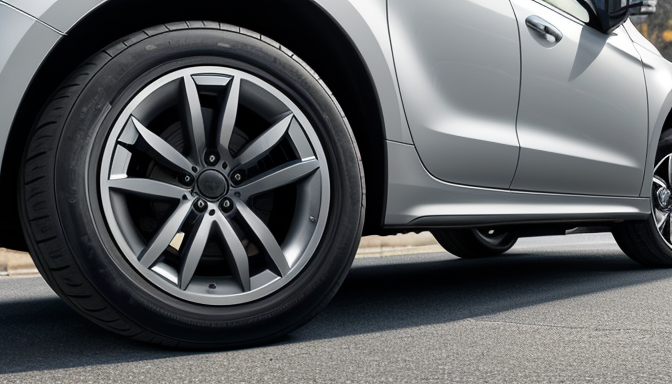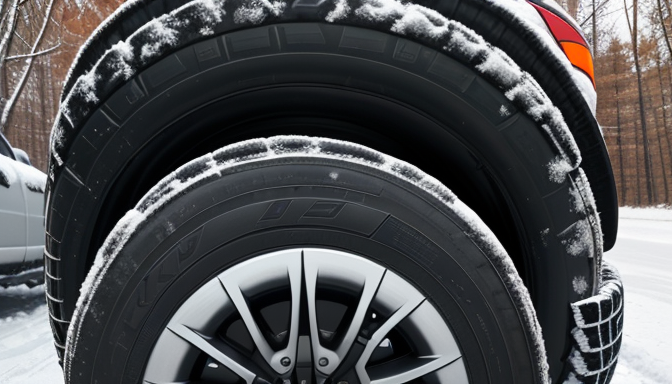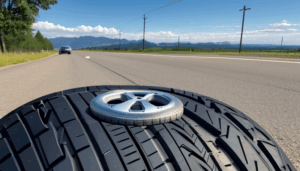Have you ever thought about how much your tires impact your safety on the road? Proper tire maintenance isn’t just a chore; it’s a crucial part of keeping you and your loved ones safe while driving. Imagine your tires as the shoes of your vehicle just like you wouldn’t wear worn-out shoes, your car shouldn’t drive on damaged tires. Regularly checking and maintaining your tires can prevent accidents and enhance your overall driving experience.
From ensuring the correct tire pressure to monitoring tread depth, every little detail counts. Did you know that under-inflated tires can reduce fuel efficiency and increase the risk of blowouts? It’s true! By staying on top of your tire care, you’re not only boosting your vehicle’s performance but also making a significant investment in your safety.
So, let’s buckle up and dive into the essential practices that can keep your tires—and you—safe on the road!
Understanding Tire Maintenance
Regular tire maintenance is not just a chore; it’s a lifesaver. Think of your tires as the only thing standing between you and the road. Keeping them in top shape ensures not only your safety but also enhances your vehicle’s performance. Essential practices include rotation, balancing, and alignment. These tasks might seem mundane, but they are crucial for prolonging the life of your tires and improving your driving experience.
For instance, rotating your tires every 5,000 to 7,500 miles helps distribute wear evenly. This not only extends tire life but also enhances traction. Similarly, balancing ensures that your tires wear evenly, while proper alignment keeps your vehicle tracking straight. Ignoring these practices is like ignoring a ticking time bomb—eventually, something will go wrong!
To make it easier, here’s a quick summary of the essential practices:
- Rotation: Change the position of your tires regularly.
- Balancing: Make sure weight is evenly distributed across all tires.
- Alignment: Adjust the angles of the tires to ensure they are parallel.
So, don’t wait for a blowout to remind you! Make tire maintenance a priority, and you’ll enjoy a safer and smoother ride.

Checking Tire Pressure
Maintaining the correct tire pressure is not just a chore; it’s a critical aspect of vehicle safety and performance. Imagine driving on a flat tire—it’s not just uncomfortable, it’s downright dangerous! Regularly checking your tire pressure can enhance fuel efficiency and extend the life of your tires. So, how do you do it? First, grab a reliable tire pressure gauge. You can find these at any auto parts store or even online.
Next, follow these simple steps to ensure your tires are always in top shape:
- Check tire pressure when tires are cold, ideally in the morning.
- Remove the valve cap and press the gauge onto the valve stem.
- Read the gauge to see if the pressure matches the recommended PSI, which you can find in your vehicle’s manual or on a sticker inside the driver’s door.
Keeping your tires inflated to the right pressure not only improves handling but also prevents premature wear. Think of it as giving your tires the best chance to perform like champions on the road. Don’t overlook this simple yet effective maintenance step; your safety depends on it!
Tread Depth and Traction
When it comes to driving, tread depth is your tire’s best friend. Imagine your tires as the shoes you wear; if the soles are worn out, you’re bound to slip and slide! Tread depth directly impacts traction, which is crucial for maintaining control on wet or slippery roads. So, how do you know when it’s time to replace those tires? A quick way to check is the penny test: Insert a penny into the tread grooves with Lincoln’s head facing down. If you can see all of Lincoln’s head, it’s time for new tires!
Generally, a tread depth of 4/32 of an inch is the minimum for safe driving in wet conditions. Below this, your tires could struggle to channel water away, increasing the risk of hydroplaning. To help you keep track, here’s a quick reference table:
| Tread Depth (inches) | Condition | Action Required |
|---|---|---|
| 8/32 or more | Good | No action needed |
| 4/32 to 7/32 | Moderate | Monitor regularly |
| 3/32 or less | Poor | Replace tires |
Remember, maintaining proper tread depth isn’t just about safety; it also enhances your vehicle’s performance and fuel efficiency. So, keep an eye on those tires, and don’t let worn-out treads put you in a slippery situation!

Seasonal Tire Considerations
When the seasons change, so do the demands on your tires. Winter tires provide enhanced grip on icy roads, while summer tires excel in warm conditions. Have you ever wondered why using the right tire for the season is crucial? It’s like wearing the right shoes for a marathon versus a snowstorm! For optimal safety and performance, consider the following:
- Winter Tires: Designed with deeper treads and softer rubber, these tires maintain flexibility in cold weather.
- Summer Tires: With a harder rubber compound, they offer excellent handling and braking on dry and wet roads in warmer conditions.
- All-Season Tires: A compromise that works well in moderate climates, but may not perform as well in extreme conditions.
Switching tires at the right time can prevent accidents and ensure your vehicle performs optimally. Typically, it’s recommended to change to winter tires when temperatures consistently drop below 7°C (45°F). Conversely, when the weather warms up, transitioning back to summer or all-season tires can help maximize your vehicle’s performance.
In summary, paying attention to seasonal tire considerations not only enhances your driving experience but also significantly boosts your safety on the road. So, when’s the last time you checked your tire setup for the season?
Signs of Tire Wear
Recognizing the is crucial for maintaining your safety on the road. Just like how your shoes wear down over time, tires experience degradation that can lead to dangerous driving conditions. Have you ever noticed your car pulling to one side? That could be an early indicator of uneven tire wear. Other signs include:
- Cracks or Bulges: Look for visible cracks or bulges on the sidewalls. These can lead to blowouts.
- Uneven Tread Wear: If one side of the tire is more worn than the other, it may indicate alignment issues.
- Low Tread Depth: Use a penny to measure tread depth; if you can see Lincoln’s head, it’s time for new tires!
Ignoring these signs can lead to serious accidents. Regularly inspecting your tires not only enhances your vehicle’s performance but also extends their lifespan. If you spot any of these warning signs, don’t hesitate to seek professional help. After all, it’s better to be safe than sorry!
Frequently Asked Questions
- How often should I check my tire pressure?You should check your tire pressure at least once a month and before long trips. Keeping your tires properly inflated can enhance fuel efficiency and safety.
- What is the recommended tread depth for tires?The minimum tread depth for safe driving is 2/32 of an inch. However, 4/32 of an inch is often recommended for better traction, especially in wet conditions.
- When should I switch to winter tires?It’s best to switch to winter tires when temperatures consistently fall below 45°F (7°C). These tires provide better grip and handling in cold, snowy, or icy conditions.
- What are the signs of tire wear?Common signs include uneven tread wear, cracks, bulges, or low tread depth. If you notice any of these, it’s time to get your tires inspected or replaced.

